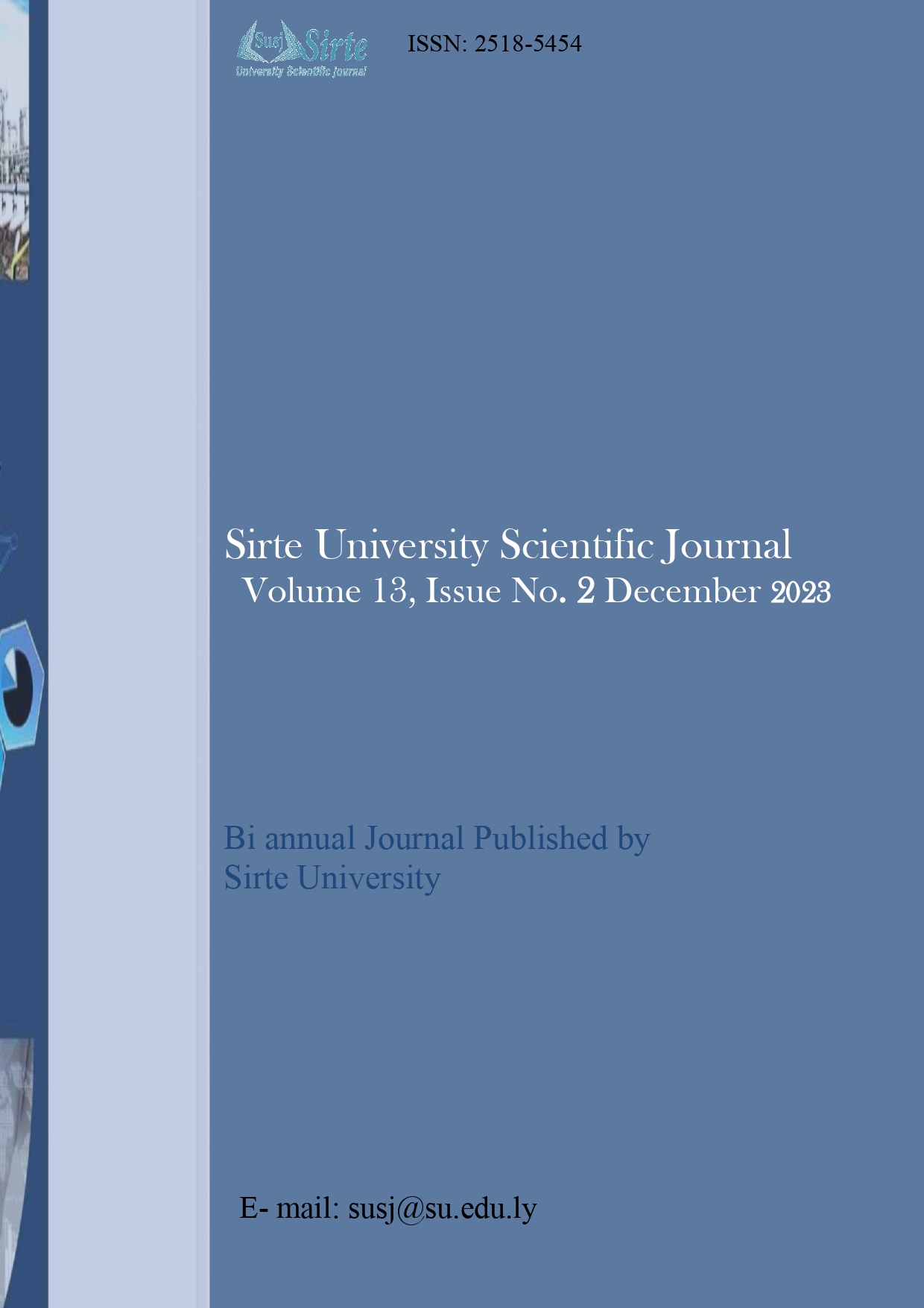Experimental Comparison Between Conductive and Capacitance Wire-Mesh Sensors to Predict Gas Void Fraction and Flow Regimes in Vertical Pipes
DOI:
https://doi.org/10.37375/susj.v13i2.2500الكلمات المفتاحية:
CondWMS، CapWMS, Void Fraction، Flow Regimes، Time Traces، PDFالملخص
A comparative study of conductive and capacitance wire-mesh sensors was carried out for a wide range of gas velocities and for a fixed liquid velocity of 1.5 m/s. The two instruments were mounted on the vertical pipe at the highest and lowest positions of the downward and upward orientations in order to predict the gas void fraction and establish various flow regimes. The principle of conductive WMS is based on the discrepancies between the conductivity of the gas and liquid, while the principle of capacitance WMS is based on the variation of the permittivity between the two-phase. During the run of the experiments, the frequency was set at 1,000 Hz for one minute.
Averaged time traces of gas void fraction and its probability density function (PDF) and distributions of gas void fraction were applied to confirm the similarities or discrepancies between the two techniques. It was observed that the gas void fractions obtained by both techniques displayed similar behavior. Although conductive WMS exhibited higher void fraction values than those measured by capacitance WMS.
The cross-sectional and sliced images (i.e., reconstructed images) were also extracted from conductive and capacitance wire-mesh sensors at higher and lower locations of the upward section, which were used as another means to confirm the above-mentioned results. It was noted from the images that both devices depicted similar flow patterns for each particular flow rate.
المراجع
Ali I. Hameed, Lokman A. Abdulkareem, and Raid A. Mahmood (2021). Experimental Comparison Between Wire Mesh and Electrical Capacitance Tomography Sensors to Predict a Two-Phase Flow Behaviour and Patterns in Inclined Pipe. Technium vol. 3, Issue 5, pp.49-63 (2021) ISSN: 2668–778X.
Aliyu M. Aliyu, Almabrok A. Almabrok, Yahaya D. Baba, Liyun Lao, Hoi Yeung, and Kyung Chun Kim (2017). Upward Gas–Liquid Two-Phase Flow After a U-bend in a Large-Diameter Serpentine Pipe. International Journal of Heat and Mass Transfer, vol.108, pages 784–800.
Almabrok A. Almabrok, Aliyu M. Aliyu, Liyun Lao,
and Hoi Yeung (2016).Gas/Liquid Flow Behaviours in a Downward Section of Large Diameter Vertical Serpentine Pipes. International Journal of Multiphase Flow, vol. 78, 2016, pages 25–43.
A. Mešić, I. Delić, and N. Ganibegović (2020). Numerical modeling of multiphase flow inside the aero mixture channel and low-emission burner of boiler OB-650. Technium: Romanian Journal of Applied Sciences and Technology, vol. 2, no. 7, pp. 94–106.
L. A. Abdulkareem, E. Escrig, B. N. Reinecke, S. Hewakandamby, and B. J. Azzopardi (2016). Tomographic interrogation of gas-liquid flows in inclined risers. ICMF – 9th International Conference on Multiphase Flow.
L. A. Abdulkareem, S. Sharaf, B. J. Azzopardi, and A. Hunt (2010). Effect of Inclination on Slug Flow Characteristics. Proceedings of the ASME 2010 International Mechanical Engineering Congress & Exposition, pp. 735–742.
L. A. Abdulkareem, V. A. Musa, R. A. Mahmood, and E. A. Hasso (2021). Experimental Investigation of Two-Phase Flow Patterns in a Vertical to Horizontal Bend Pipe Using Wire-Mesh Sensor. Revista de Chimie, vol. 71, no. 12, pp. 18–33.
Jones, Jr. O. C. and Zuber, N. (1975). The Interrelation between Void Fraction Fluctuations and Flow Pattern
in Two-Phase Flow. International Journal of Multiphase Flow, vol. 2, pp. 273–306.
M. G. Rasteiro, R. Silva, F. A. P. Garcia, and P. Faia (2011). Electrical tomography: a review of configurations and applications to particulate processes. KONA Powder Part. J., vol. 29, no. 29, pp. 67–80.
Mahmood, R.A., D. Buttsworth, and R. Malpress (2019). Experimental and Numerical Investigation of Two-phase Flow Orientation Direction Change on a Vertical Flash Tank Separator. International Journal of Management and Applied Science (IJMAS). 5 (4): p. 25–29.
Mahmood, R., D. Buttsworth, and R. Malpress (2019). Computational and Experimental Investigation of using an Extractor in the Vertical Gravitational Flash Tank Separator. International Journal of Automotive and Mechanical Engineering. 16 (2): p. 6706–672.
Mahmood, R.A., D. Buttsworth, and R. Malpress (2019). Computational and Experimental Investigation of the Vertical Flash Tank Separator Part 1: Effect of Parameters on Separation Efficiency. International Journal of Air-Conditioning and Refrigeration.
U. Hampel, M. Speck, H. J. Menz, D. Hoppe, E. Schleicher, and H. M. Prasser (2005). Experimental ultra fast x-ray computed tomography with a linearly scanned electron beam source. Flow Meas. Instrum., vol. 16, no. 2–3, pp. 65–72.
V. A. Musa, R. A. Mahmood, S. M. N. Khalifa, O. M. Ali, and L. A. Abdulkareem (2021). Flow Patterns of Oil-Gas and Pressure Gradients in Near-Horizontal Flow Pipeline : Experimental Investigation Using Differential Pressure Transducers, vol. 39, no. 2, pp. 621–628.
Xie, C.G., Plaskowski, A., Beck, and M.S. (1989). 8-Electrode Capacitance System for Two-component Flow Identification. IEE proceeding Pt. A, 136, pp. 184–190.
Y. Murai, S. Ohta, A. Shigetomi, Y. Tasaka, and Y. Takeda (2009). Development of an ultrasonic void fraction profiler. Meas. Sci. Technol., vol. 20, no. 11.





